In the ever-evolving world of desserts, flashy trends often steal the spotlight—think matcha lava cakes, galaxy-glazed donuts, or cronuts stacked like edible skyscrapers. But behind the neon sprinkles and TikTok filters lies a quieter, richer history—a world of desserts that once graced royal feasts, soothed Victorian souls, and delighted 1970s potluck tables before vanishing into culinary obscurity. These forgotten treats didn’t disappear because they weren’t delicious; they simply fell out of fashion, elbowed aside by quicker, sweeter, or flashier newcomers.
Today, however, there’s a growing appetite for rediscovery. From Michelin-star chefs to home bakers, more people are embracing nostalgia and honoring the past through the dishes they create. That includes desserts once deemed too old-fashioned, too delicate, or too time-consuming for our fast-paced palates. And yet, their flavors, textures, and backstories are more than worthy of a second act.
In this list, we’re shining a spotlight on 12 such classic desserts—from a 16th-century whipped wine cream to the retro mint-green fluff of Watergate Salad. Some are rooted in medieval kitchens, scented with rosewater and almond milk. Others hail from grandma’s recipe box, still whispering tales of childhood birthdays and church picnics. One has even survived over 500 years of culinary change, a testament to its timeless charm.
So dust off your pudding basins, revive your double boilers, and prepare to be tempted by a lineup of long-lost indulgences. These are the sweet, storied confections that deserve a place at the table once again—not just for their flavor, but for the slice of history they serve with every bite. Because sometimes, the most unforgettable desserts are the ones we nearly forgot.
1. Syllabub: The 500-Year-Old Boozy Foam

Whipped into frothy perfection since the 1500s, syllabub once graced the finest tables across Britain. This airy delight combines cream with wine or citrus juice, creating a naturally curdled mixture that’s whipped until it forms cloud-like peaks.
Tudor-era party guests would sip this alcoholic treat through special spouts on syllabub glasses designed specifically for this purpose. The dessert gradually disappeared as Victorian sensibilities frowned upon boozy sweets.
Modern versions often include sherry, brandy, or Madeira wine, with lemon zest and nutmeg sprinkled on top. The magic happens when the alcohol’s acidity causes the cream to thicken naturally without cooking!
2. Blancmange: The Medieval Almond Marvel
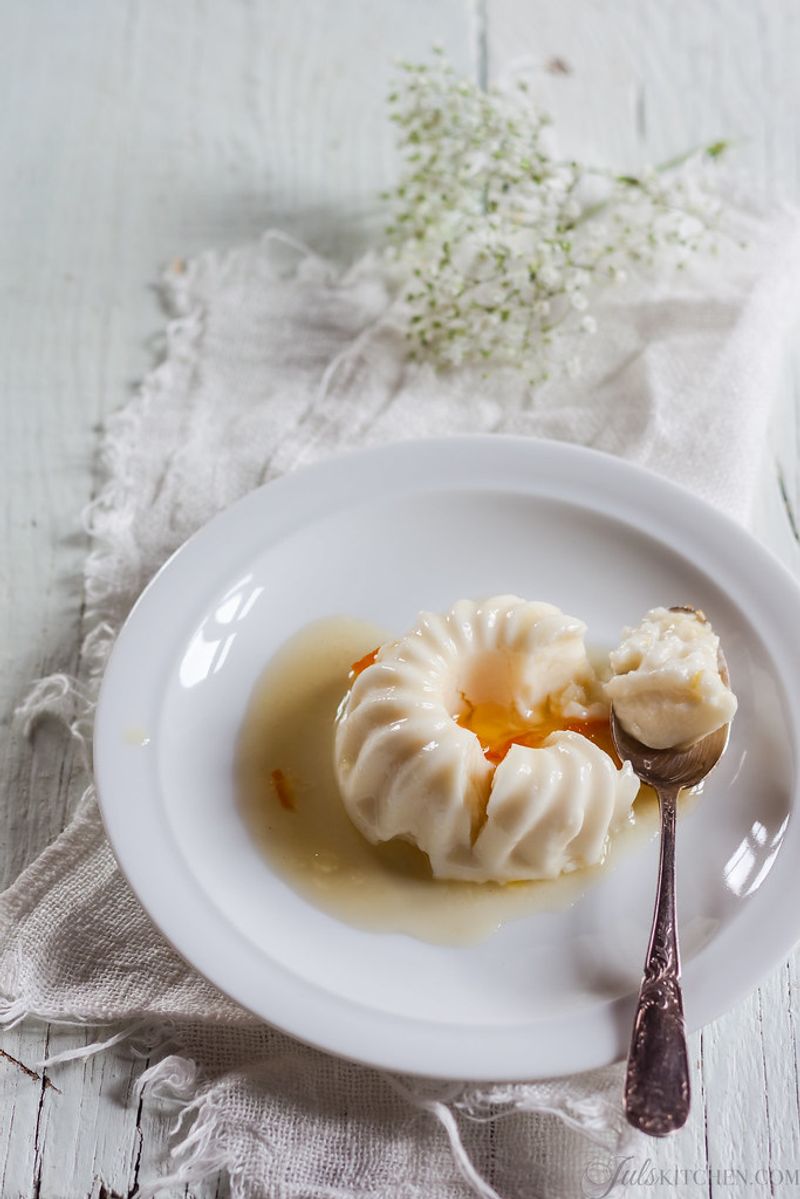
Originally served at medieval banquets as a savory chicken dish, blancmange gradually transformed into the sweet, delicate pudding we barely remember today. Its name literally means “white food” in French, perfectly describing its pale, pristine appearance.
Medieval nobility prized this dish for both its elegant simplicity and its showcase of expensive ingredients like almond milk and white sugar. By the Victorian era, it had evolved into a molded dessert similar to panna cotta but with distinctive almond notes.
The secret to perfect blancmange lies in achieving that delicate wobble—firm enough to hold its shape when unmolded, yet tender enough to yield to the gentlest pressure of a spoon.
3. Floating Island: Meringue Clouds on Custard Seas
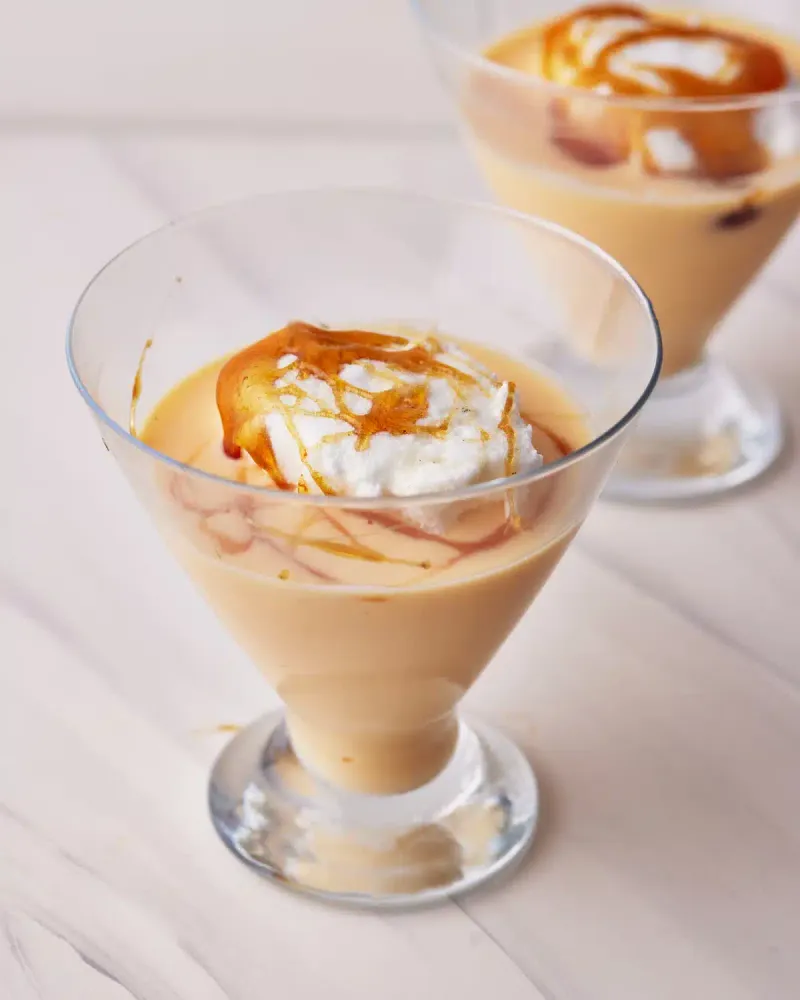
Poached islands of meringue drift lazily atop a golden sea of vanilla custard in this elegant French creation known as Île Flottante. Each cloud-like puff is poached gently in milk before being lifted carefully onto its custard base.
French grandmothers once prepared this labor-intensive dessert for special Sunday gatherings, creating a moment of theatrical presentation as the dessert was brought to the table. The contrast between the airy meringue and silky crème anglaise creates a textural masterpiece.
Traditionally finished with drizzles of caramel and scattered with praline or candied violets, floating island demonstrates the French genius for combining simplicity with sophistication. Each spoonful delivers both melting softness and sweet airiness in perfect harmony.
4. Treacle Tart: Harry Potter’s Forgotten Favorite
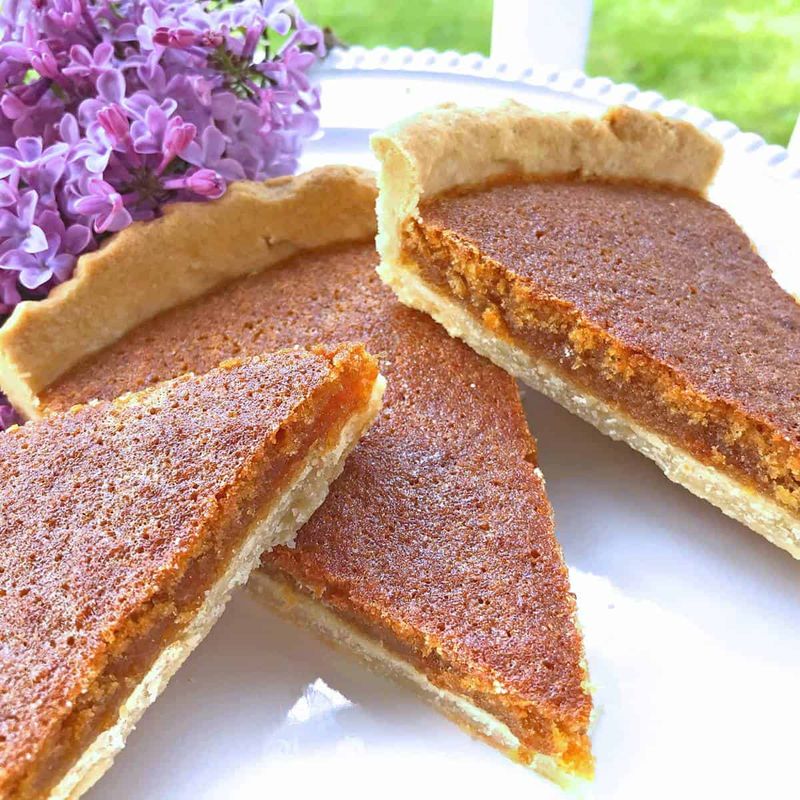
Golden syrup flows like liquid sunshine into this humble British tart, creating a sticky-sweet filling that captivated generations before falling into obscurity. The distinctive filling combines Lyle’s Golden Syrup (a British pantry staple since 1881) with fresh breadcrumbs and lemon zest.
Made famous again when mentioned as Harry Potter’s favorite dessert, treacle tart has medieval origins when treacle referred to any uncrystallized syrup. The breadcrumbs give the filling its unique texture—neither quite solid nor liquid, but somewhere magically in between.
Served warm with a dollop of clotted cream or cold custard, each bite delivers a perfect balance of sweetness and citrus tang. The pastry crust should snap before giving way to the amber filling within.
5. Queen of Puddings: A Royal Layered Legacy
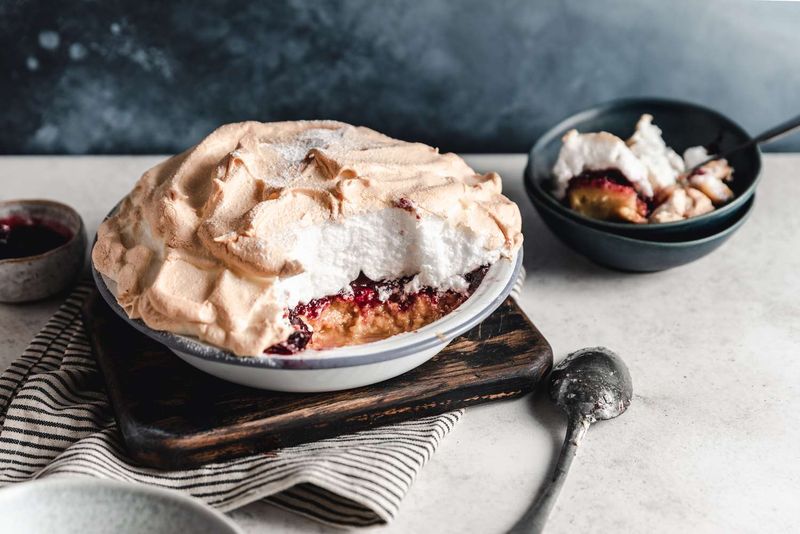
Crowned with peaks of toasted meringue, this regal British dessert combines humble ingredients into something truly majestic. The base layer features breadcrumbs soaked in creamy custard until they transform into something entirely new and luxurious.
A middle layer of vibrant berry jam adds a jewel-like streak of color and tartness. Victorian cooks created this clever dessert to transform leftover bread into something fit for royalty, using just eggs, milk, and preserves from the pantry.
Each spoonful delivers multiple textures and temperatures—warm custard base, cool jam center, and crisp meringue top. The contrast between the golden-brown meringue exterior and its marshmallow-soft interior creates a particularly satisfying textural experience that once delighted diners across Britain.
6. Rødgrød: The Berry Dessert No One Can Pronounce

Bursting with Nordic summer flavors, this vibrantly crimson dessert captures the fleeting sweetness of Scandinavian berries. The name (pronounced roughly as “ruth-gruth”) has become famous as a tongue-twister that foreigners struggle to pronounce correctly.
Danish and Swedish families traditionally prepared this seasonal treat when summer berries reached their peak ripeness. The dessert’s brilliant color comes from a mixture of strawberries, raspberries, and red currants, thickened with potato starch until just set.
Served cold with a generous pour of cream or milk, the contrast between the tart berry mixture and rich dairy creates a perfect balance. The dessert’s vibrant appearance and refreshing taste made it a celebration of summer’s bounty in a region where growing seasons were precious and brief.
7. Indian Pudding: Colonial America’s Comfort Dessert
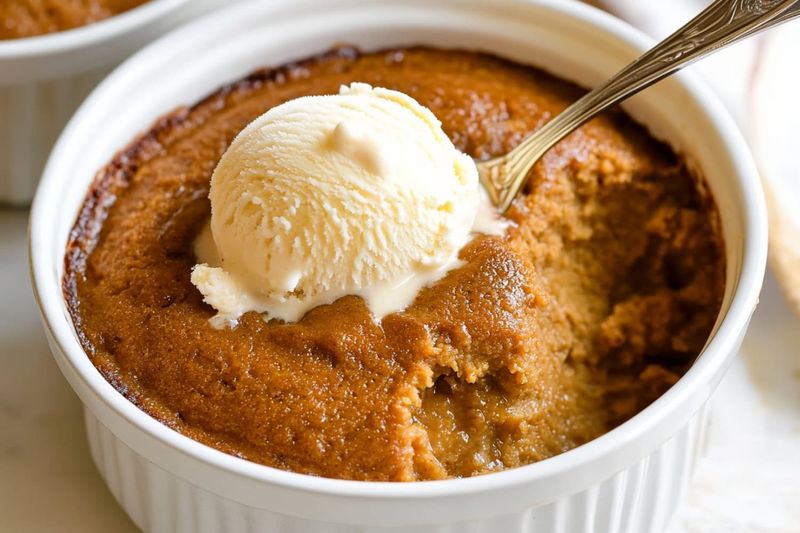
Warming spices mingle with cornmeal and molasses in this deeply American creation, born when colonists adapted English recipes to New World ingredients. Early settlers, missing their familiar wheat-based puddings, cleverly substituted native cornmeal (which they called “Indian meal”) and sweetened it with molasses when sugar was scarce.
Slow-baked for hours until it develops a caramelized crust and custard-like interior, Indian pudding was once a staple at New England dinner tables. The dessert represents a true culinary fusion—European techniques applied to indigenous ingredients. The complex flavor profile includes cinnamon, ginger, and nutmeg, creating depth beyond simple sweetness.
Traditionally topped with vanilla ice cream or poured cream, the temperature contrast between warm pudding and cold topping creates a sensory delight that sustained generations through harsh New England winters.
8. Watergate Salad: The Fluffy Green Mystery
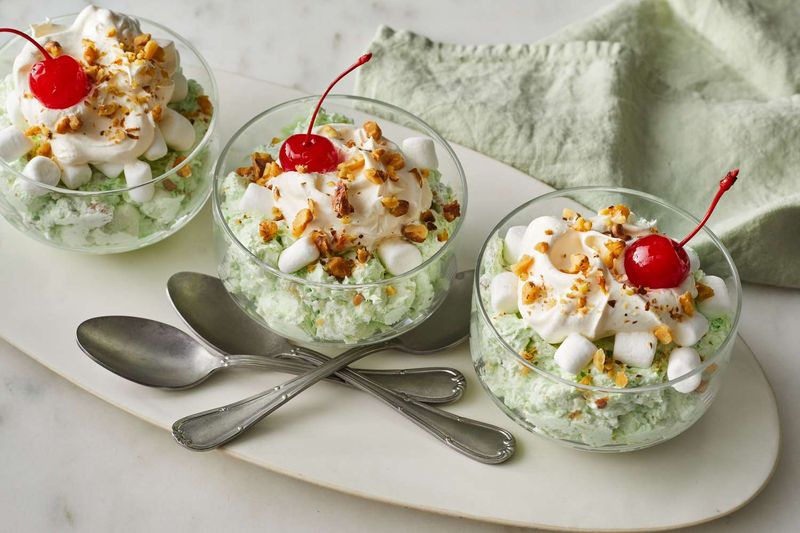
Born in the psychedelic 1970s, this peculiar pistachio-colored concoction became an American potluck sensation before mysteriously fading away. Despite its name, it contains no lettuce or vegetables—just a sweet mixture of pistachio pudding, crushed pineapple, marshmallows, and whipped topping folded together.
Nobody knows exactly why it’s called “Watergate Salad,” though theories connect it to the famous political scandal. The most likely explanation is that Kraft Foods created it to promote their pistachio pudding mix, and someone cleverly named it after the headline-grabbing controversy of the era.
The unexpected combination creates a light, fluffy texture with pops of sweetness from the marshmallows and fruity brightness from the pineapple. This retro dessert represents a uniquely American moment when convenience foods transformed into creative culinary expressions.
9. Tipsy Cake: The Booze-Soaked Party Dessert
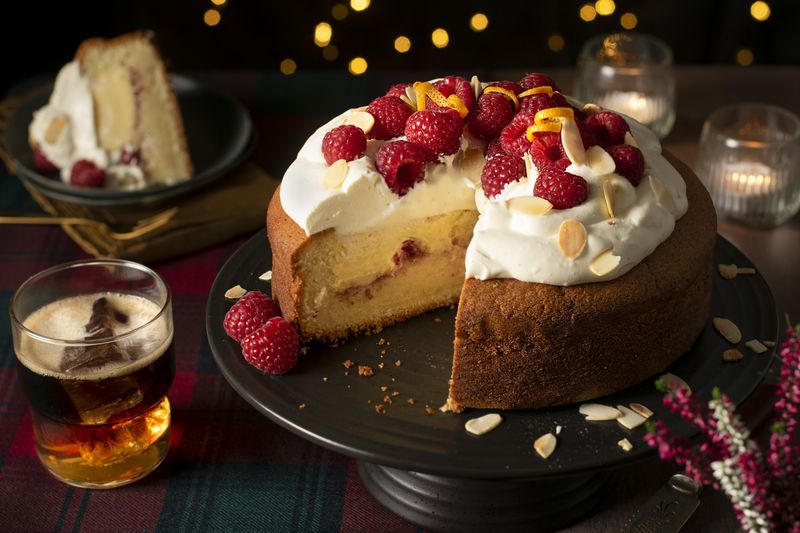
Generous splashes of sherry transform ordinary sponge cake into this festive, adults-only dessert that was once the centerpiece of celebration tables. Victorian hostesses would soak day-old cake in fortified wine, creating both a delicious dessert and clever way to use leftovers.
Also known as “Tipsy Parson” or “Tipsy Squire,” legends claim it was named after clergymen who enjoyed this spirited treat a bit too enthusiastically. The alcohol preserves the cake while infusing it with complex flavors, similar to how fruitcakes were traditionally preserved.
Served with rich custard sauce poured over the top, the contrast between boozy cake and vanilla cream creates a sophisticated flavor profile. Modern versions sometimes incorporate brandy, rum, or even bourbon for different flavor notes, though the dessert’s festive spirit remains unchanged.
10. Cabinet Pudding: The Crown Jewel of Victorian-Era Desserts
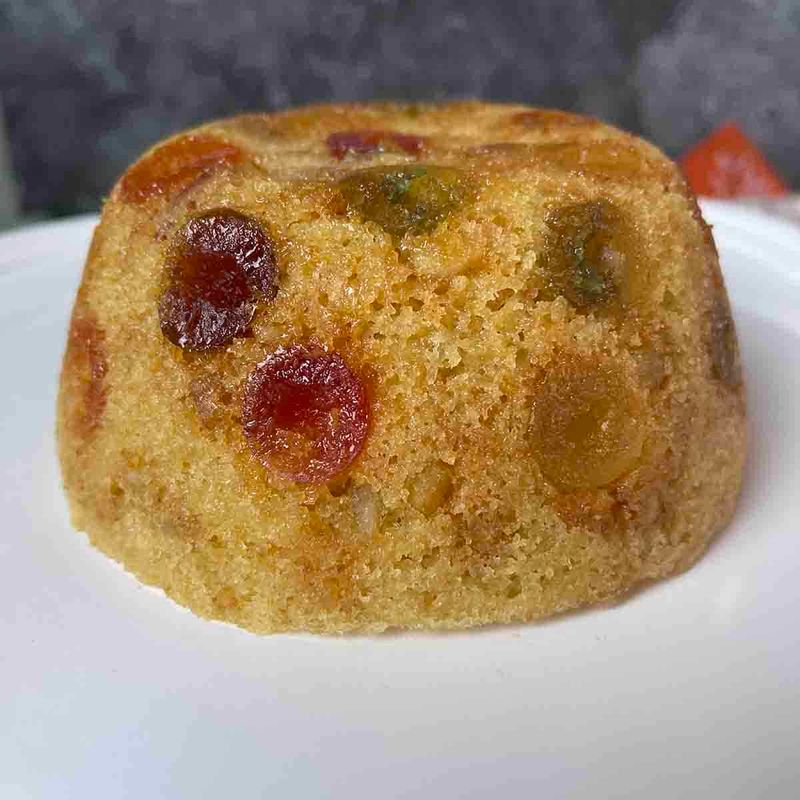
Golden custard seeps through layers of brandy-soaked sponge in this Victorian-era dessert once favored at grand British dinner parties. Cabinet Pudding, also known as Chancellor’s Pudding, transformed stale cake or bread into an ornate showpiece, packed with raisins, currants, and candied citrus.
When unmolded, it revealed a stained-glass mosaic of fruit and sponge, glistening beneath a buttery glaze. Recipes from the 19th century praised its ability to combine thrift with indulgence, steaming for hours to infuse citrus zest, nutmeg, and subtle warmth.
Often served with a rich cream sauce or a dash of sherry, each spoonful offered silky custard, tender fruit, and nostalgic charm. It’s a forgotten masterpiece ready for a modern-day revival.
11. Junket: The Dessert That Cured Kings
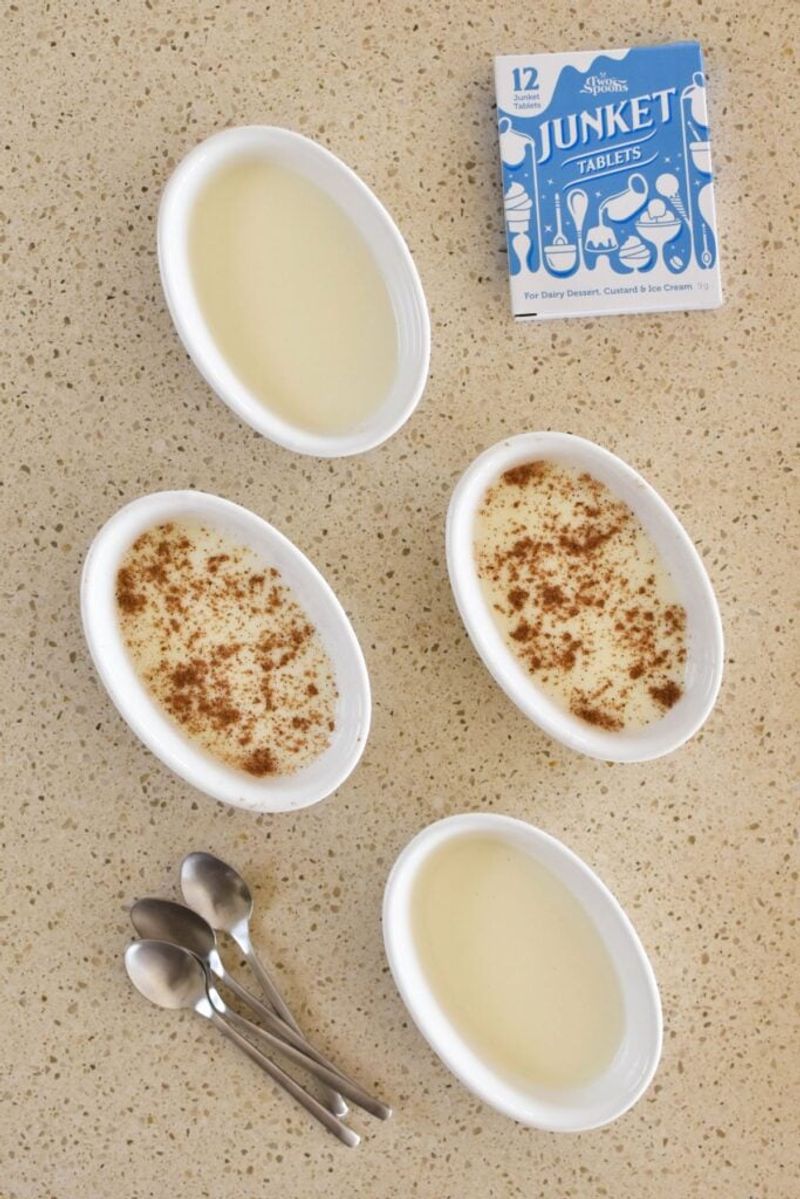
Barely more substantial than flavored milk, this delicate dessert was once considered so digestible it was served to invalids and royalty alike. The magic ingredient is rennet—the same enzyme used in cheesemaking—which gently transforms sweetened milk into a soft, trembling custard without heat.
The name “junket” comes from the Old French “jonquette,” referring to the rush baskets that held the curds as they set. Popular throughout the Tudor and Victorian eras, junket was often flavored with brandy, vanilla, or nutmeg and topped with clotted cream.
The dessert requires perfect timing and temperature—too warm, and it won’t set; too cold, and it becomes grainy. This technical challenge, combined with the difficulty of finding rennet in modern kitchens, contributed to junket’s disappearance from dinner tables despite its subtle charm.
12. Fruit Fool: The 16th Century Whipped Delight
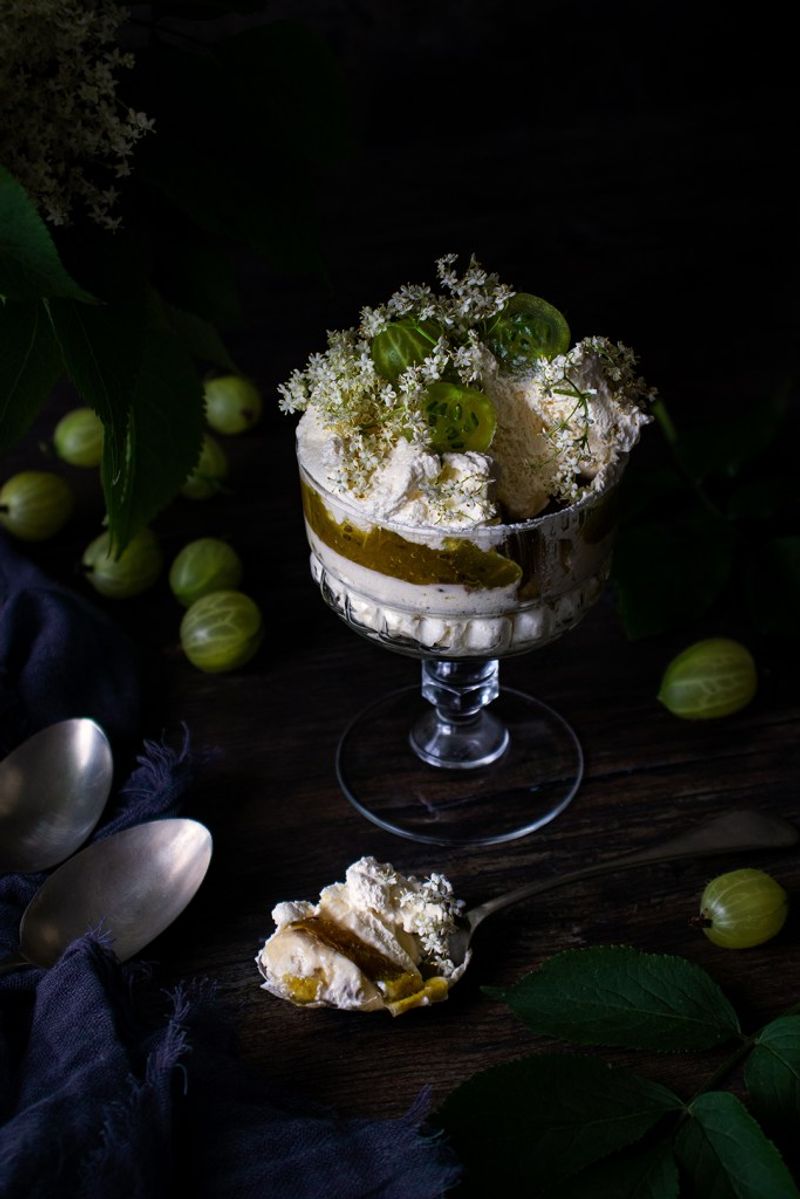
Capturing summer’s bounty in clouds of cream, fruit fool has been delighting British palates since Tudor times. The name likely derives from the French “fouler,” meaning to crush or press, referring to how the fruit is mashed before folding into whipped cream.
Traditionally made with gooseberries, whose tartness perfectly balances the rich cream, this dessert celebrates seasonal simplicity. The contrast between the tart fruit and sweet cream creates a perfect harmony that has stood the test of time, even as the dessert itself faded from popularity.
The preparation involves minimal cooking—just enough to soften the fruit and release its juices. When folded together, the fruit creates beautiful ripples through the cream without fully incorporating, creating a marbled effect that’s as visually appealing as it is delicious.
Leave a comment